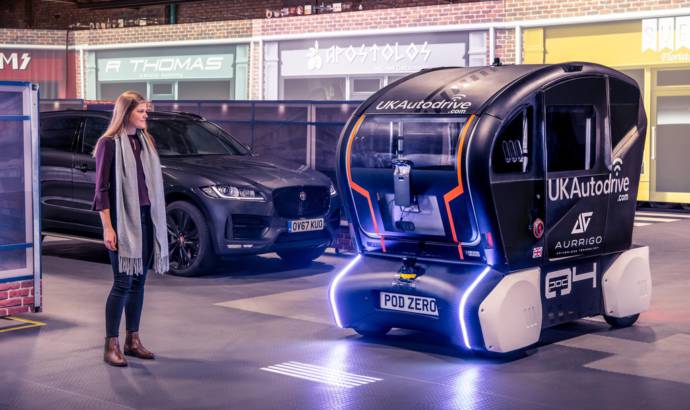Many car manufacturers are focusing on creating autonomous cars, but very few think at solutions for the other traffic participants. Jaguar Land Rover has developed a system that projects the direction of travel onto the road ahead of self-driving vehicles, to tell other road users what it is going to do next.
The intelligent technology beams a series of projections onto the road to show the future intentions of the vehicle – for example stopping and turning left or right – as part of research into how people can develop their trust in autonomous technology. In the future the projections could even be used to share obstacle detection and journey updates with pedestrians.
These projections, tested on autonomous pods developed by Aurrigo, feature a series of lines or bars with adjustable spacing. The gaps shorten as the pod is preparing to brake before fully compressing at a stop. As the pod moves off and accelerates, the spacing between the lines extends. Upon approaching a turn, the bars fan out left or right to indicate the direction of travel.
Trials were set up by a team of advanced engineers, working in Jaguar Land Rover’s Future Mobility division, supported by cognitive psychologists, after studies showed 41 percent of drivers and pedestrians are worried about sharing the road with autonomous vehicles.
The innovative system was tested on a fabricated street scene at a Coventry facility with engineers recording trust levels reported by pedestrians both with and without projections.
This commitment extends to Jaguar Land Rover’s current models with a suite of Advanced Driver Assistance Systems including Adaptive Cruise Control, Blind Spot Assist and Intelligent Speed Limiter available across its range of vehicles, including the Jaguar F-PACE and Range Rover Velar.



